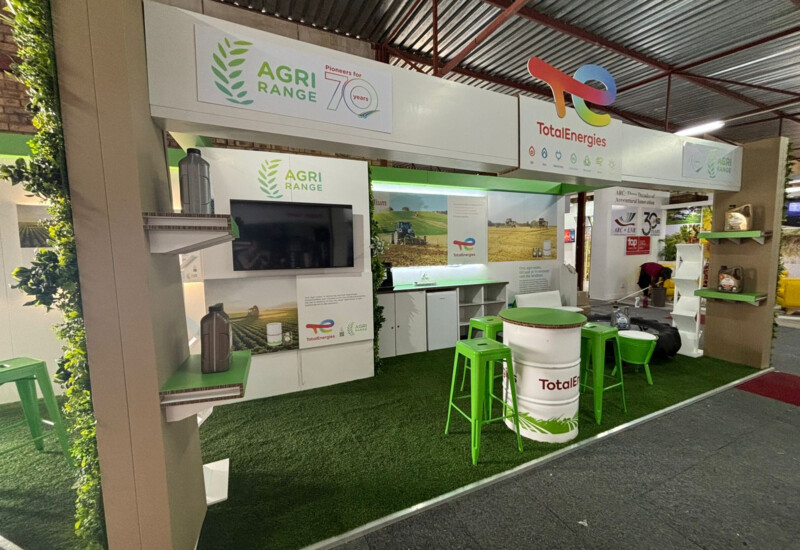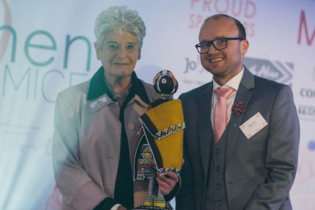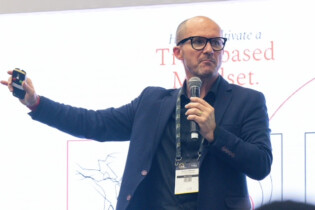In today’s rapidly evolving world, sustainability has become a crucial element in every industry, and the exhibition sector is no exception. With increasing awareness and commitment to environmental responsibility, exhibition organisers and suppliers are now focusing on incorporating sustainable practices into their operations. Chat’r Xperience outlines key strategies and insights for greening exhibitions,
both from an organising and a stand design perspective.
The role of organisers
Organisers play a pivotal role in driving sustainability. They need to communicate the importance of sustainable practices to exhibitors and suppliers effectively. Investing in reusable stands and materials, avoiding the use of brand-new resources for every event, not only reduces waste but also sets a standard for the entire exhibition industry.
Sustainable stand design
Sustainable stand design is a significant aspect of greening exhibitions. The actual materials used to construct stands are critical. Opting for reusable materials -such as aluminium frames, engineered fibreboard, and other environmentally friendly materials – as well as avoiding single-use items can make a substantial difference. Integrating eco-friendly elements like succulents and reusable decorations can enhance the aesthetic appeal while promoting sustainability.
Economic sustainability
Economic sustainability is another vital component. Supporting local suppliers and communities is crucial. Using local resources and suppliers not only boosts the local economy but also reduces the carbon footprint associated with transportation. It’s about making conscious choices that benefit both the environment and the community.
Practical examples of successful sustainable practices in exhibitions highlight the feasibility and benefits of these approaches. For instance, repurposing materials from previous stands not only saves costs but also significantly reduces waste. This approach demonstrates that with creativity and commitment, sustainable practices can be seamlessly integrated into stand design.
Proper planning is essential for successful sustainable exhibitions
Starting to plan for sustainability from the very beginning and engaging with sustainability consultants early in the process ensures that every aspect of the event, from venue selection to menu-planning, aligns with sustainable practices.
One of the common concerns is balancing sustainability with budget constraints. While sustainable options might have higher upfront costs, they often result in savings over time. For instance, investing in reusable stands can reduce costs for future events. Additionally, looking at sustainability as a marketing advantage enhances the brand’s reputation and appeal.
Technology’s role in promoting sustainability
Technology plays a significant role in promoting sustainability in exhibitions. Digital signage, virtual attendance options, and using QR codes instead of printed materials are excellent ways of reducing waste and improve efficiency. The potential of hybrid conferencing and virtual conferencing, fast-tracked by the COVID-19 pandemic, continues to grow, offering more sustainable options for the exhibition industry.
Creating a culture of sustainability within organisations
This involves adopting sustainable practices at all levels, from daily office operations to large-scale events. Educating staff and stakeholders about the importance of sustainability and providing the necessary resources and support can foster a more environmentally conscious workplace.
Engaging attendees in sustainability efforts is also important. Providing information about the event’s sustainable practices, encouraging the use of public transportation, and offering incentives for sustainable behaviour can significantly impact the overall success of sustainability initiatives.
The exhibition industry must continuously adapt to new sustainability challenges and opportunities. Staying updated with industry trends, collaborating with sustainability experts, and committing to ongoing improvement ensures long-term success and environmental responsibility. By incorporating these strategies, the exhibition sector can lead the way in promoting sustainability and setting an example for other industries to follow.
By integrating these sustainable strategies, the exhibition industry can create events that are not only impactful and engaging but also environmentally responsible and economically beneficial. The journey towards sustainability is ongoing, but with collective effort and commitment, significant progress can be made.
Case study: TotalEnergies Nampo
In 2023, our client – Mason Africa Group – tasked us with designing an environmentally friendly and sustainable exhibition booth for their client TotalEnergies at the 2023 NAMPO exhibition in Bredasdorp, Western Cape. Chat’r Xperience, renowned for designing and constructing exhibition booths that comply with sustainable practices, provided TotalEnergies with a unique design that not only stood out aesthetically but was also 100% manufactured from Ecoboard, which is an engineered fibreboard made from fibres recovered from recycled cardboard boxes.
By using Ecoboard, we were able to manufacture a booth that was easy to transport, flat-packed in a crate, which ensured that the stand was lightweight and did not need to be transported in a heavy vehicle which contributed to a lower carbon footprint. The stand was also constructed in a single day, which reduced our impact on the local community and the environment. All furnishings and décor on the stand were made from recycled items, such as repurposed tractor tyres as coffee tables as well as repurposed buckets and oil drums as seating and meeting tables.
After the show, we stored the stand for our client and reused it at Nampo Bothaville in 2024. This not only saved our client the cost of producing a new stand but also ensured further sustainability practices by reusing all elements, ensuring minimal environmental impact. The stand set up at Bothaville 2024 has once again been stored for future use, showing Chat’r Xperience’s commitment to the 4 R’s of sustainability: Reduce, Reuse, Recycle, and Recover. As a signatory to the Net Zero Carbon Events initiative, this also demonstrates our client’s commitment to sustainable exhibition practices.







